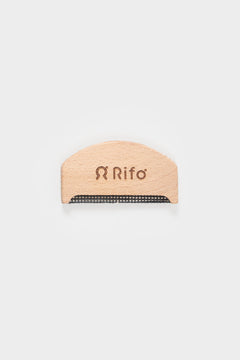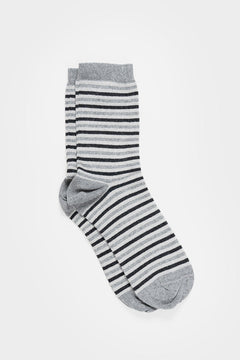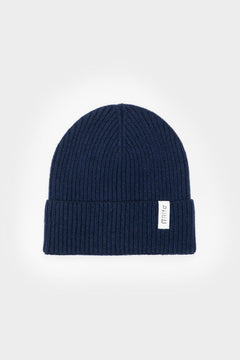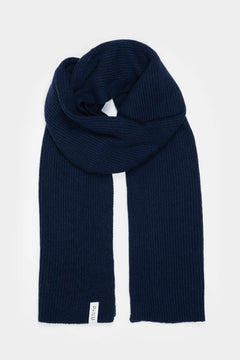Here’s what's on everyone’s lips: it defines some companies’ tendency to present a sustainable self-image despite being very little sustainable.
We already explained what green washing is in an article on our blog, but we felt it would be useful to return to the subject to help identify it and spread awareness of the issue.
In recent years the market has actually adapted to the increasing demand for sustainable products, riding the eco-friendly wave as if it were a fashion. What once used to be a niche market has now turned into mainstream and everyone is more likely to purchase a product with an eco/conscious/recycled label.
The double face of greenwashing
Have you ever experienced impulsively buying a product from a large chain just because they declared a 30% of sustainable materials in its composition? Well, you most probably have fallen into the trap of greenwashing.
The difficulty lies in being able to distinguish fake eco-friendly from those brands that are truly committed to create a sustainable and ethical alternative.

It takes a trained eye and a critical sense to detect greenwashing. As customers’ awareness grows, so does the brands’ ability to share misleading communications.
This is precisely the reason why we decided to create a guide to recognising greenwashing. Here are the key points to consider in order not to fall for it again.
At the end of this article you’ll also find an anti-greenwashing test, which will enable you to spot it in just a few steps.
You’ll also receive a small surprise to thank you for your interest towards a more sustainable fashion.
Communicating sustainability
A slogan is not enough, certifications and verifiable sources are also required.
In this case it is in fact appropriate to speak of green claims, i.e. business practices that tend to present a product as sustainable, without showing datas to demonstrate the real impact on the environment.
However, there is something new in the pipeline in this regard. The Circular Economy Action Plan states the need for companies to prove that the claims they make about sustainability are well-founded and true.
A big step forward was then taken with the introduction of the UNI EN ISO 14021 European Standard, which from 2021 requires brands to clearly communicate their real environmental impacts.
And this is not just to say. Indeed, the fines for those who do not take it seriously range from EUR 5,000 up to EUR 5,000,000.
X% Sustainable
“This garment is 30% made of materials produced through sustainable processes”. How often do we read such statements on product tags?
WHAT DOES IT MEAN?
First of all, there is no clarity as to the nature of the materials, and vagueness is one of the first weapons of greenwashing, which relies on people’s laziness in checking and fact-checking.

Apart from that, it is necessary to address that it’s not easy to claim something is 100 per cent something. Indeed, very often greenwashing actually hides behind a flaunted 100 per cent.
We are continuously seeking the best balance between the market and our values. We admit that limits do exist, however, we are convinced that a sustainable composition going from 20 to 30 per cent is too low.
In spite of this, we often see big brands producing most of their main collection with traditional raw materials, relocating their work to Asia and then creating a capsule collection consisting of a few “conscious” items.
We’ll not win the fight against climate change by giving only 20% of our best.
Where production takes place
This is a very simple aspect to analyse.
If the brand is claiming a semblance of sustainability, but labels on its garments state Made in China, Bangladesh, Taiwan, Morocco or any other country where labour costs are clearly lower than in Europe and in western countries, we have reason to suspect greenwashing.
This is because one cannot just be sustainable in one respect and leave out the other aspects. Using x% recycled materials while producing where labour is not protected and the hourly wage is 1$ is not sustainable.
Let’s say it again, loud and clear.

The production model
Developing an anti-greenwashing shield is not only about where, but also about how the production takes place, although these aspects often go hand in hand.
A brand that boasts of using recycled fibres is very likely to have large-scale production in China (we talked about it in this article).
Generally, 20% of sustainable material composition corresponds to 80% of traditional, overproduced and wasted material that’s going to the landfill or incinerator, or disposed of through seasonal sales.

Prices and discounts
The most striking confirmation of a large-scale production model can be observed at the time of sales.
If a brand continuously offers discounts and unmissable bargains, it means that its production went beyond market demand. As a result, prices are low from the beginning and become rock-bottom at the end of the season. Where has the value of raw material and labour been lost?
Price is perhaps the most difficult greenwashing trap to escape, as we became accustomed to prices that hide exploitation and social injustice.
Another reason for this is that we struggle to limit ourselves to buying only what’s necessary, and we succumb to hoarding.
Furthermore, in recent times we are experiencing a considerable reduction in purchasing power. As a study reported by the AGI news agency shows, only 3 out of 10 Italians are willing to pay more for sustainability.
Despite being aware of the difference between the price of sustainable fashion and that of fast fashion, it understandably takes effort.
Still, it’s good to resist, to raise the bar and not pander to an economic system that wants us unaware and pushes us not to recognise the proper value of processes and encourages us to clean our consciences by buying goods with a recycled paper tag and a green print on it.
Sustainability starts from us and the power is in the hands of customers.
Being aware and quicker than green washing is the only way to make a real change.

An alternative to green washing is possible
After reading this article you might ask yourself if it’s possible to be truly sustainable.
The hunt for green washing could easily turn into an intolerance towards any kind of market offer.
What lies ahead is certainly a complex scenario, but we must not lose hope, as there are many realities that are sincerely committed to bringing about change.
We too are trying to make our small contribution by locally producing a clothing line from recycled materials.
We know we are not perfect and we are prepared to admit our mistakes, because we believe that transparency is the only real weapon against greenwashing.
In conclusion: we now offer you our tool to find your way through all the brands that claim to be sustainable. Here is Rifò’s anti-greenwashing test.








